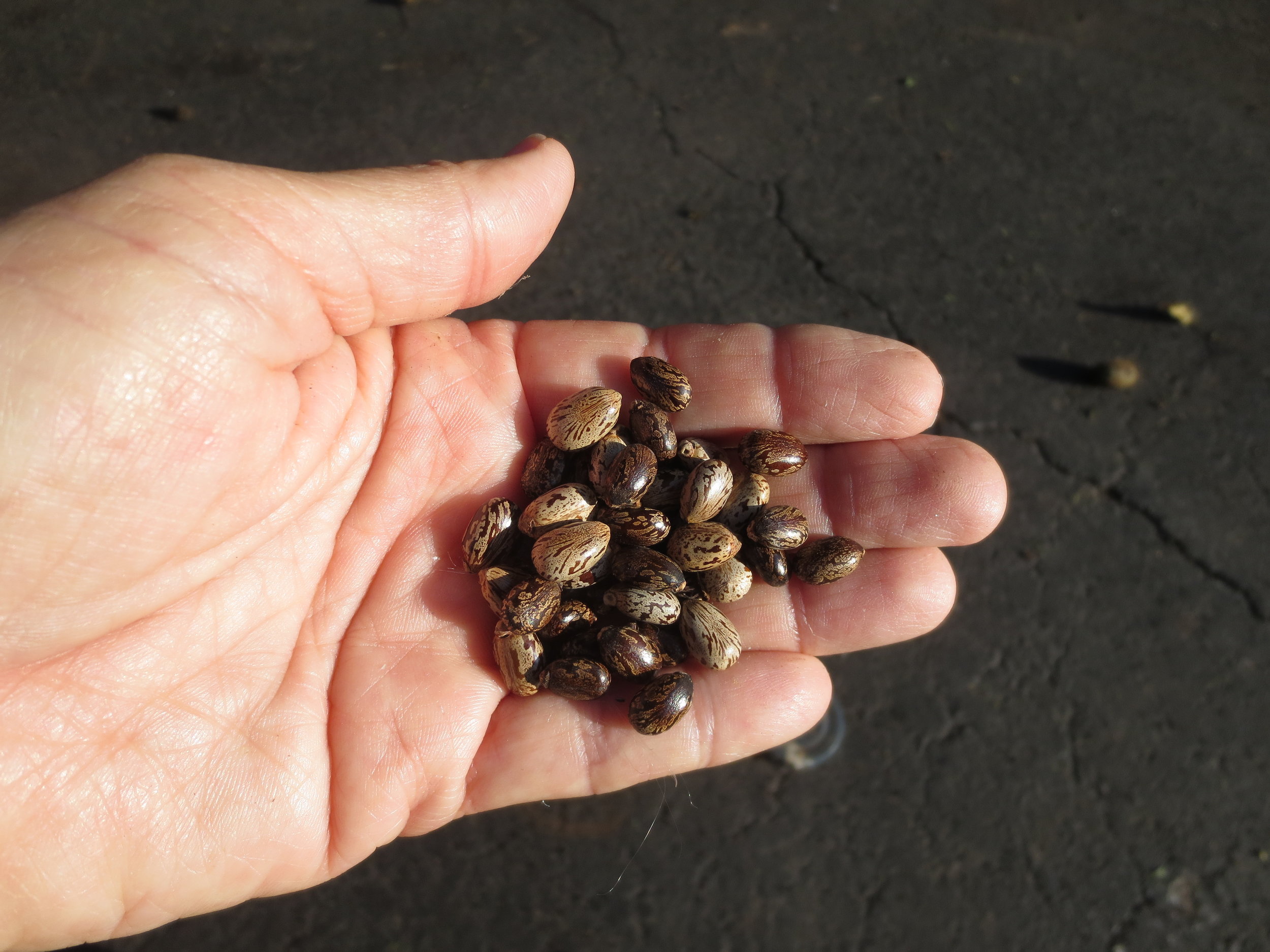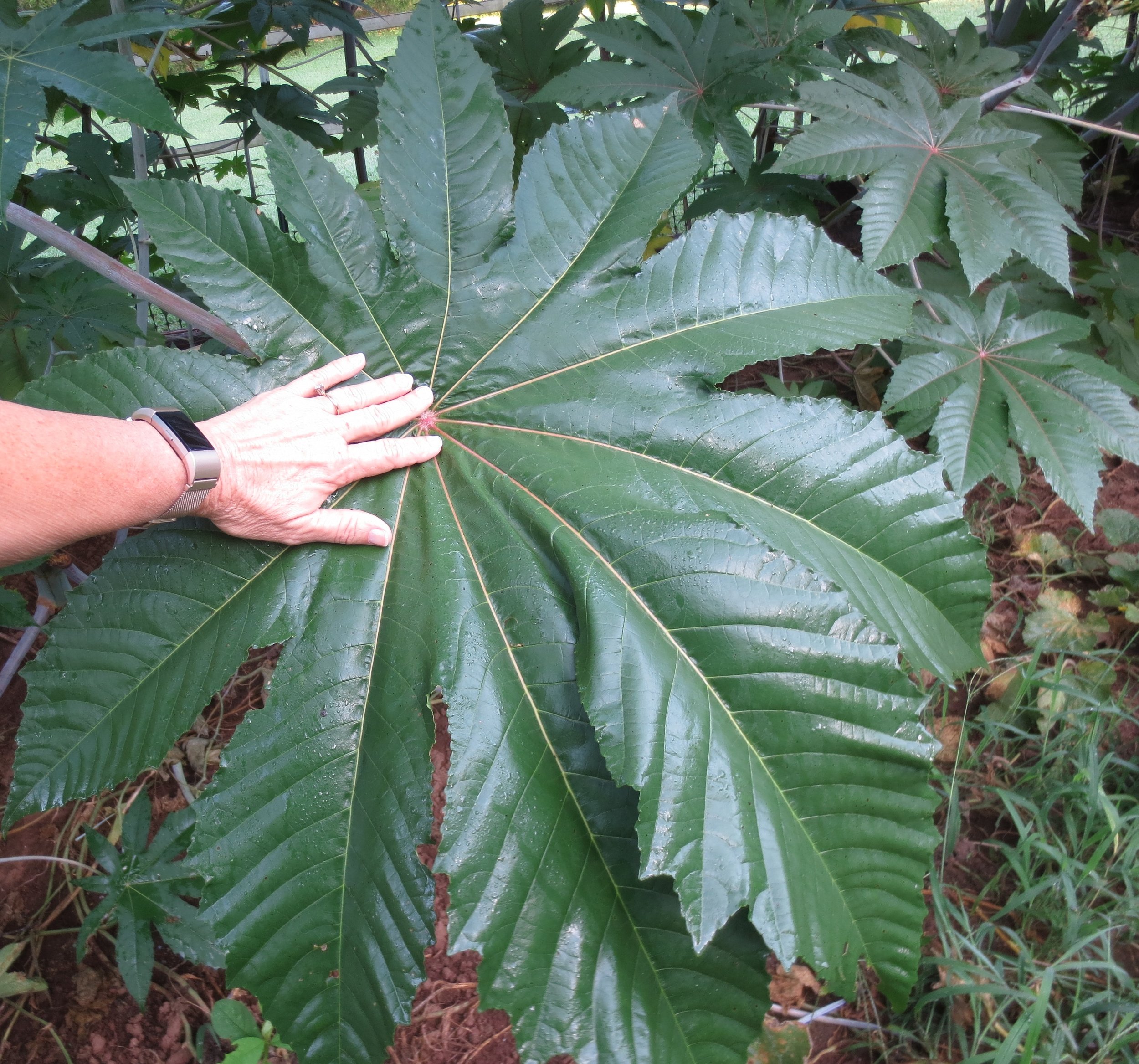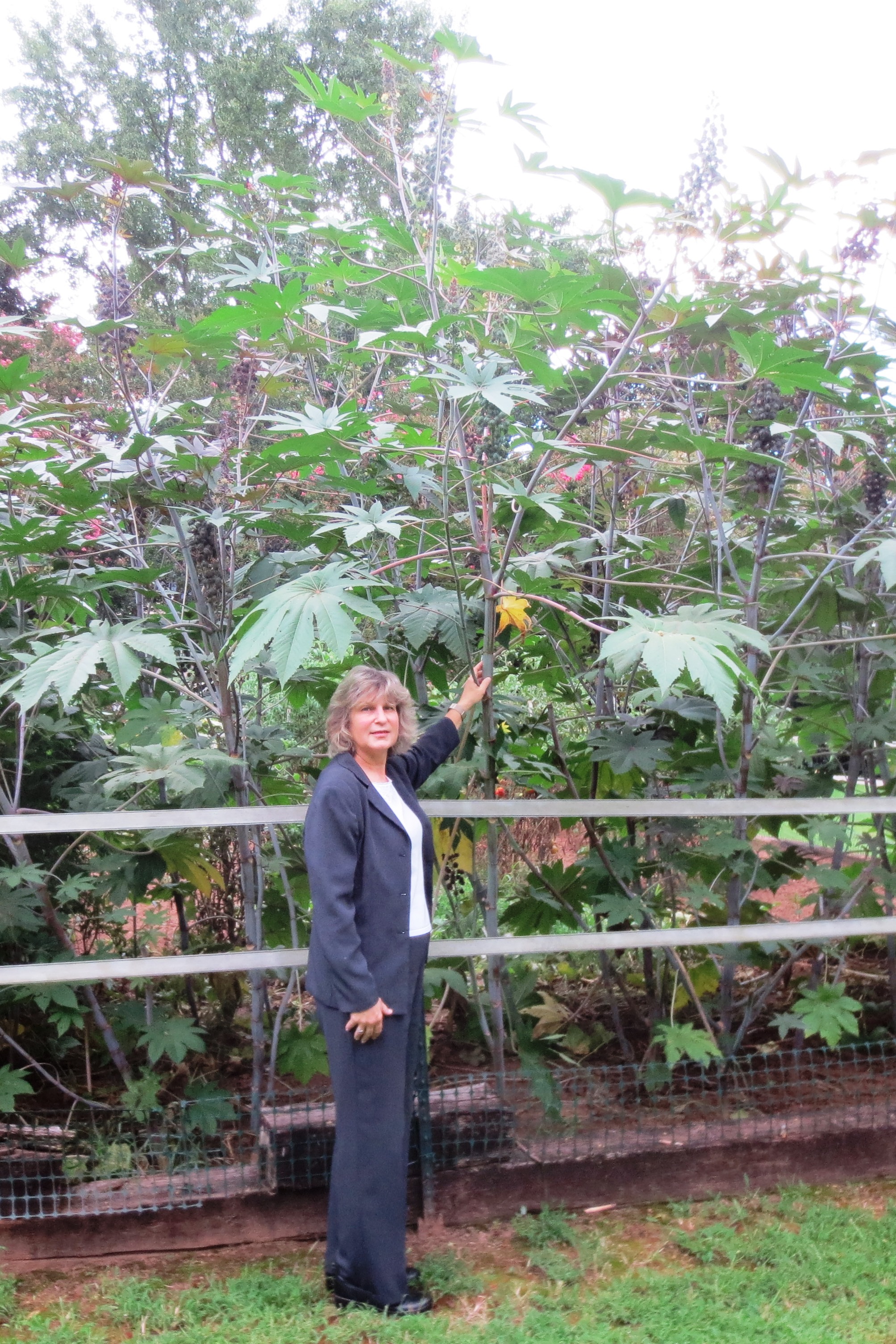If you love the look of tropical plants but don’t have the climate for them, consider growing Castor Bean, a plant with dinner-plate sized leaves.
Ricinis communis has gained negative attention in the past because the seeds can be processed (don’t ask me how) to produce the deadly poison Ricin. The word ricinis is Latin for tick, and that is exactly what the seeds look like – big, overblown dog ticks. Seeds should be started where you want the plants to grow, since they do not transplant easily. I allow them to mature and drop seeds in the Mary Snoddy garden, and love that they pop up in random places.
They are heat lovers and grow rapidly to 8 feet or more. Thomas Jefferson grew a prize specimen that topped 22 feet. Castor bean blooms and seeds are not particularly decorative. Grow them for their bold, deeply palmate leaves. Some cultivars have an attractive red tint to the foliage. The stems resemble bamboo a bit. They are annuals in my Zone 7 garden, but can be perennial in warmer zones.
The leaves and seeds are toxic if ingested. The plants contain two separate poisons. The most lethal of these poisons is contained in the seed. Two seeds, chewed and swallowed, can kill a person. This is the same plant whose seeds can be processed to remove the ricin (again, don’t ask me how) to produce the nasty-tasting Castor Oil that was given to ailing children many years ago. I think this archaic practice has fallen off the radar. If you remember it from your childhood and wonder about your parents’ wisdom in dosing you with it, well, consider that maybe you weren’t their favorite kid.
Please don’t grow these if you have young children or pets that like to chew on plants. Several years ago, I was experiencing devastation from deer that were visiting my vegetable garden every night. I planted a moat of Castor Beans as a protective hedge, hoping to repel the deer or at least make them sick enough to leave my garden alone. The voracious herd at New Hope Farm ate the leaves off the plants but didn’t touch the seeds. I have since installed an electric fence to protect the food garden. Folklore says that they repel voles and moles, but my personal experience does not support that theory.
Castor Beans die at the first freeze. The large plants require a mattock and labor to remove the dead stems and roots, but I think it is well worth the effort.




